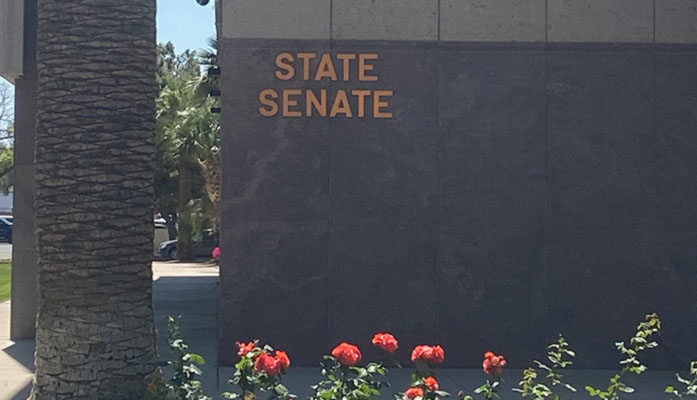
by Matthew Holloway | Jun 23, 2025 | Education, News
By Matthew Holloway |
A new report from the Common Sense Institute (CSI) Arizona has shed light on the growing trend of homeschooling and the associated costs nationwide, using Utah as an example and revealing both the financial burden and opportunities for families opting out of in-person public education. The in-depth study, released Wednesday, explores the economic and educational landscape of home-based learning, particularly in light of Utah’s innovative Utah Fits All (UFA) scholarship program, a similar but far more limited program than Arizona’s Empowerment Scholarship Accounts (ESA).
According to the CSI report, nearly 30,000 Utah students applied for 10,000 UFA scholarships in 2024, with an estimated 80% of recipients using the funds for homeschooling. These $8,000-per-student scholarships have expanded access to educational resources, enabling families to afford formal programs, online classes, tutoring, and specialized instruction. Although a fraction of the Arizona ESA program’s more than 86,000 students, Utah’s UFA presents a reasonable sample size.
One Utah parent, homeschooling seven children, told CSI Arizona that the UFA scholarship allowed their youngest child to access structured online courses, a resource unavailable to their older siblings.
“Nearly all respondents who shared feedback cited UFA as enabling greater ‘access to opportunities,’” the report states, highlighting the program’s role in addressing parental demand for a greater diversity of educational options.
The report estimates homeschooling costs in Utah range widely, from $700 to $70,000 annually, depending on the services and resources families choose. Unlike traditional schools, homeschooling families are frequently left to absorb significant expenses, such as curriculum materials and facility costs, which are not covered by public funding outside of programs like UFA.
Homeschooling’s rise in Utah and Arizona both mirror national trends, with the report citing an increase to as much as 11% of U.S. students being homeschooled since 2020. In Utah, public school enrollment has declined by 0.3% since its 2021 peak, with district schools losing over 6,000 students between 2021 and 2024, largely driven by smaller kindergarten classes. A similar phenomenon was observed in Arizona by CSI. Meanwhile, charter school enrollment also grew by 1,500 students over the same period. The report seems to reinforce CSI’s earlier observations that dissatisfaction with traditional school environments or curricula is a key driver of homeschooling demand, predating the introduction of UFA and the Arizona ESA.
Despite Utah’s $10.2 billion investment in public education, only about $1 billion supports charter schools, and homeschooling families have historically relied heavily on personal funds to get by, putting added stress on families already suffering under inflation. The UFA program, launched in 2024, created a significant shift, offering financial relief and flexibility to homeschooling parents.
Programs such as UFA in Utah and ESA in Arizona are responding to growing parental demand for tailored learning experiences, and as homeschooling continues to expand, the study calls for greater transparency in tracking participation and costs to better tailor it and programs like it to the evolving needs of homeschooling students.
CSI Arizona concluded, “Over the past five years, the K-12 landscape in the United States has changed dramatically. Today, there are fewer kids in America’s traditional public schools than before the pandemic, and far more children are being homeschooled.
“At the same time, the nature and cost of homeschooling has changed as it has grown. Today’s homeschoolers often started out either enrolled in or considering the traditional school system, and are looking for a rigorous educational experience that includes diverse and formalized coursework, curriculum, and standards. Providing that is costly – comparable in costs to other traditional schools, or even more expensive per-pupil once all costs (direct and hidden) are accounted for.”
CSI added that state policymakers “should carefully consider the consequences of policies that continue treating students differently based on where they go to school – especially if those differences are based on assumptions that underestimate the cost of non-traditional options.”
Matthew Holloway is a senior reporter for AZ Free News. Follow him on X for his latest stories, or email tips to Matthew@azfreenews.com.

by Jonathan Eberle | Jun 23, 2025 | News
By Jonathan Eberle |
Arizona lawmakers have taken a significant step to strengthen protections for domestic animals with the final legislative passage of Senate Bill 1658, a measure designed to broaden the scope of what constitutes animal cruelty under state law. The bill, sponsored by Senator Shawnna Bolick, now heads to Governor Katie Hobbs for consideration.
SB 1658 aims to crack down on neglect and abuse by explicitly requiring pet owners and caregivers to provide essential care, including timely medical attention. The legislation adds legal consequences for those who intentionally, knowingly, or recklessly fail to prevent unnecessary suffering of animals under their custody or control.
“How we treat our animal friends says a lot about our society,” said Senator Bolick following the Senate vote. “There are too many stories of animal cruelty around Arizona, leading to the necessity of this legislation to help protect their well-being. These innocent animals are voiceless, but when they suffer, it speaks volumes.”
The measure passed both legislative chambers with bipartisan support. Advocates say the bill fills a critical gap in existing law by clearly defining minimum standards of care and reinforcing the responsibility of animal owners to act in the best interest of their pets’ health.
Dr. Steven Hansen, President and CEO of the Arizona Humane Society, praised the bill’s advancement. “This landmark victory is a powerful testament to what can be achieved when passionate individuals come together to champion change,” Hansen said. “It would not have been possible without the tireless efforts of our steadfast advocates who stood up for the voiceless… and the fierce leadership of the bill sponsor, Senator Shawnna Bolick.”
SB 1658 will mark a significant milestone in Arizona’s efforts to prevent animal abuse and promote responsible pet ownership.
Jonathan Eberle is a reporter for AZ Free News. You can send him news tips using this link.

by Jonathan Eberle | Jun 23, 2025 | News
By Jonathan Eberle |
Arizona voters will weigh in next year on a proposed constitutional amendment that would bar the state and local governments from taxing drivers based on how many miles they travel, as well as from placing limits on an individual’s vehicle mileage.
The proposed amendment, which will be placed on the November 2026 ballot, would make Arizona the first state in the nation to constitutionally prohibit vehicle miles traveled (VMT) taxes and related mileage restrictions.
VMT taxes—also referred to as mileage-based user fees—charge drivers a per-mile fee for use of public roads. While proponents argue the system offers a fairer alternative to traditional gas taxes, especially as electric vehicles become more common, opponents have raised concerns about privacy, government overreach, and potential impacts on rural and suburban drivers.
Currently, 24 states are testing or have launched VMT programs, according to the Tax Foundation. Most are voluntary and focus on electric or hybrid vehicles. Only Hawaii has a mandatory VMT program scheduled to take effect in stages, beginning with electric vehicles by 2028 and light-duty vehicles by 2033. Oregon was the first to implement a voluntary VMT system in 2015.
Supporters of Arizona’s constitutional amendment say it’s a preemptive strike to protect driver freedom and block what they see as a growing trend of government intrusion.
“As we have seen in other states, governments left to their own devices will succumb to radical attempts to track, tax, or limit their citizens’ transportation miles,” said Scot Mussi, president of the Arizona Free Enterprise Club, which has long opposed VMTs. “The Arizona Free Enterprise Club has been fighting for the Freedom to Move Act since 2023,” Mussi added. “We are thrilled that our Republican-majority legislature chose to give voters the ability to protect their way of life by preserving our freedom to travel by personal vehicle in our state.”
SCR 1004 marks the legislature’s second attempt to advance such a measure. A similar proposal—House Concurrent Resolution 2018—passed the House in 2024 but failed in the Senate in a 15–15 tie. Under Arizona law, constitutional amendments approved by the legislature do not require the governor’s signature to go to the ballot.
SCR 1004 is the first measure officially certified for the 2026 ballot. Lawmakers are still considering 20 other proposals—eight constitutional amendments and 12 referred statutes—that could also appear before voters next year. If voters approve SCR 1004, Arizona would become the first state to embed a ban on VMT taxes and mileage limits into its constitution—setting a potentially influential precedent in the national transportation policy debate.
Jonathan Eberle is a reporter for AZ Free News. You can send him news tips using this link.

by Jonathan Eberle | Jun 22, 2025 | News
By Jonathan Eberle |
A scheduled confirmation hearing for Karen Lee Peters, Governor Katie Hobbs’ nominee to lead the Arizona Department of Environmental Quality (ADEQ), was abruptly postponed on Wednesday by the Senate Director Nominations Committee.
Committee Chair Sen. Jake Hoffman (R-Queen Creek) announced the delay just hours before the hearing was set to begin, citing unresolved questions about certain aspects of Peters’ background that surfaced during the vetting process.
“Based on possible discrepancies with information relating to items we vetted, further clarification is necessary prior to holding Ms. Peters’ confirmation hearing,” Hoffman said in a written statement. He did not specify the nature of the discrepancies, nor whether they pertained to Peters’ previous professional experience or policy positions.
The postponement also came as the Arizona Senate worked to advance the state budget, which Hoffman noted was straining staff capacity.
“Given the Senate attempting to move the state budget today, our staff is stretched thin, and it is best to simply table the nomination for now,” Hoffman said. “I have communicated to Hobbs’ staff that we will reschedule her hearing soon.”
Peters’ confirmation is one of several being closely watched, as the Republican-controlled Senate continues to scrutinize the Democratic governor’s nominees for key state agencies.
Jonathan Eberle is a reporter for AZ Free News. You can send him news tips using this link.

by Jonathan Eberle | Jun 22, 2025 | News
By Jonathan Eberle |
With less than two weeks before Arizona’s fiscal year ends, a deepening budget dispute between the state House and Governor Katie Hobbs escalated Saturday, as House Speaker Steve Montenegro announced plans to introduce a continuation budget to keep state government running past the June 30 deadline.
Montenegro said the House would move forward with a stopgap measure after determining that the Senate-passed executive budget, negotiated by Hobbs and Republican Senate leaders, lacks sufficient support to clear the House.
“The executive budget plan passed in the Senate does not have the votes in the House—with bipartisan opposition from Republicans and Democrats,” Montenegro said. “Now, with time running out and no viable path forward for their plan, it’s our responsibility to act to prevent a shutdown.”
He added that House Republicans had already passed their own budget last week, which he said focused on public safety, infrastructure, and government accountability—but that proposal was “ignored by the Senate.”
“The House is not going to be forced into a take-it-or-leave-it deal that doesn’t reflect the will of our members or the people we represent,” Montenegro said. “We will do what responsible legislators should do: take action to keep government running and protect Arizona taxpayers.”
A continuation budget, currently being drafted, would maintain current funding levels to preserve essential government operations while lawmakers continue to negotiate. However, the governor swiftly condemned the plan and signaled she would veto any such proposal.
In a statement, Governor Hobbs accused House Republicans of abandoning bipartisan talks and attempting to “jam through an irresponsible and partisan ‘budget.’”
“For months I have worked with leaders of both parties, in both chambers, to craft a bipartisan, balanced, and fiscally responsible budget,” Hobbs said. “Sadly, House Republican leadership abdicated their responsibility and refused to meaningfully participate in those bipartisan conversations.”
Hobbs warned that the continuation budget would gut pay raises for state troopers and firefighters, slash childcare and education funding, raise taxes on small businesses, and eliminate key investments in veterans’ services and wildfire mitigation.
“Speaker Montenegro knows this, yet he has chosen to continue with this farce as an exercise in pointless political grandstanding,” she said. “His reckless actions jeopardize basic government functions with potentially devastating consequences.”
The governor also criticized House Republicans for seeking an increase in their own per diem pay while proposing cuts to public safety and education programs.
“This irresponsible House Republican budget will raise costs and make our state less safe, less secure, and less competitive,” she added. “It’s time for House Republican leadership to come back to reality, stop wasting everyone’s time, and show some common sense by working with their colleagues in a productive fashion.”
With the June 30 deadline approaching, the battle over Arizona’s budget now hinges on whether either side can reach a new agreement—or whether the impasse will trigger a government shutdown.
Jonathan Eberle is a reporter for AZ Free News. You can send him news tips using this link.

by Matthew Holloway | Jun 22, 2025 | Economy, News
By Matthew Holloway |
A bill to establish a Bitcoin Reserve in the State of Arizona was resurrected in the legislature by the State Senate before the chamber adjourned Sine Die on Friday. House Bill 2324, introduced by Arizona Representative Jeff Weninger, was passed in the Arizona House on its third reading, but was reconsidered in the Senate and advanced 16-14. The bill now returns to the House for consideration before it also adjourns.
The proposed measure would create a “Bitcoin and Digital Assets Reserve Fund” designed to manage all legally forfeited digital assets and currencies.
According to the Senate Fact Sheet, HB 2324 would allow “a court to order a person convicted of an offense for which forfeiture applies to forfeit any digital asset used in, acquired through or traceable to the offense.” I also, “prescribes procedures for a government agency to sell seized digital assets and outlines the allocation of monies acquired from the sale.” And it, “establishes the Bitcoin and Digital Assets Reserve Fund, administered by the State Treasurer, to store, manage and allocate digital assets securely.”
The bill now concurred upon by the Senate must also pass the Arizona House before moving to Governor Katie Hobbs’ desk where its fate is uncertain. According to Coin Telegraph, the first $300,000 in digital assets from a criminal forfeiture would head to the Attorney General’s office, from whence any mount over $300,000 would be divided with 50% going to the Attorney General, 25% to the state general fund, and 25% to the new digital assets reserve fund. While Hobbs has vetoed three Cryptocurrency bills, she has also signed HB 2749 into law which permits the state to hold unclaimed cryptocurrency and establish a Bitcoin reserve fund that wouldn’t utilize any state funding or taxpayer dollars.
At the time, Hobbs stated, “Current volatility in cryptocurrency markets does not make a prudent fit for general fund dollars,” and described the cryptocurrency-related legislation as “risk(s),” and “untested.”
Matthew Holloway is a senior reporter for AZ Free News. Follow him on X for his latest stories, or email tips to Matthew@azfreenews.com.






